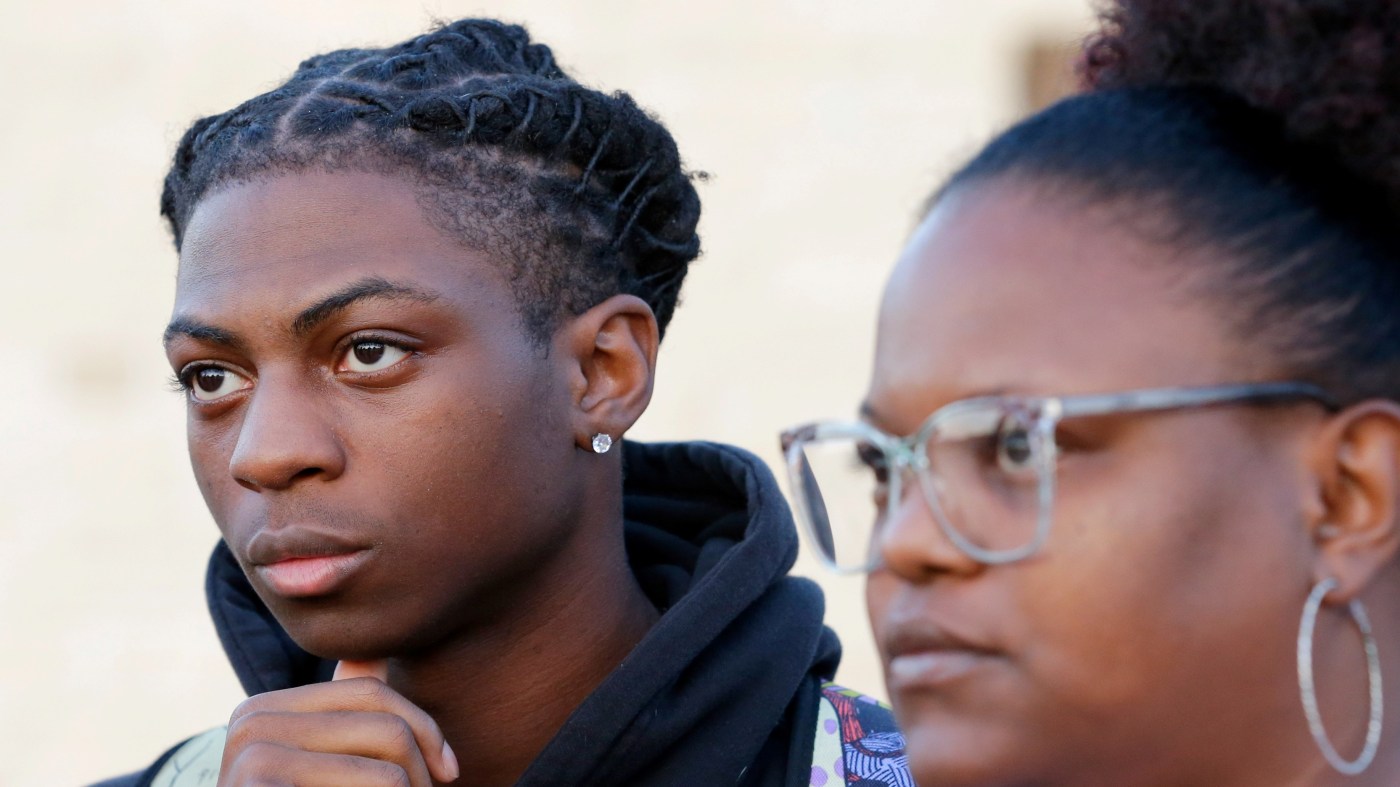
Stephen L. Carter: Really, Texas? Don’t punish Black students for their hair
After Ronald Reagan’s 1984 reelection landslide, his inaugural committee advertised for “attractive, clean-cut, all-American” performers to dance and sing at various celebratory events. The description ignited a firestorm on any number of grounds, not the least of which was race: Activists feared that the committee wanted no Black performers — in particular, that “clean-cut” meant not having distinctively Black hair.
That episode comes to mind in the wake of last week’s decision by a Texas judge to uphold a public school’s suspension of a Black student for refusing to trim his hair. The question before the court was whether the (aptly named) Barbers Hill Independent School District had violated a new state statute forbidding racial discrimination on the basis of hair. Because the district’s rules address length but not style, ruled the judge, the statute isn’t violated.
Where to begin? Perhaps with the New York Times’s delightfully deadpan description of the hair in question: “locs, or long ropelike strands of hair, that he pins on his head in a barrel roll, a protective style that his mother said reflected Black culture.”
What the Times calls “locs” were traditionally “dreadlocks” or simply “locks” — once a symbol of Black rebellion, later a flashpoint for arguments over cultural appropriation, and nowadays simply a way some people wear their hair.
Black people especially.
Texas school districts seem to have gone out of their way to specify that locks are not acceptable, as the sociologist Patricia A. Banks notes in a recent analysis. And Barber Hills, intentionally or not, has plunged willy-nilly into one of the most complex and painful aspects of the nation’s long, tortured history: attitudes toward Black people and their hair.
The nation’s relationship to hair has always been complex. In her excellent book “Foul Bodies: Cleanliness in Early America,” the historian Kathleen M. Brown notes how during the 18th and 19th centuries, hair was thought to carry disease; keeping hair clean and groomed in public was a way to show that you were safe.
Black hair was considered especially dangerous, a fear often shared even by slavery’s opponents. Brown tells us how the abolitionist Fanny Kemble despaired at the way that female slaves covered their children’s “poor little wooly heads” with “half a dozen hot, filthy coverings.” Kemble decreed that on her husband’s plantation, at least, enslaved children would be permitted to wear hats only if their heads were shaved.
True, during the era of enslavement, hairstyling was one of the few areas in which most owners left their human property to decide for themselves. But what appeared atop the head remained a key marker of racial distinction. An 1858 article in a medical journal set forth differences between Black and white hair as evidence that the two races were separate species. In 1896, a Southern newspaper solemnly reported that African hair was curly to “deflect the rays of the tropical sun” and thus prevent “more severe penetration into the brain.” Ten years later, W.E.B. Du Bois would publish “The Health and Physique of the Negro American,” part of which was devoted to illustrating, with copious photographs, the enormous variety of black hair and skin. The report made no difference.
Yet although public display of groomed hair mattered, creating that look was a private matter, one almost of intimacy. Small surprise, then, that long after white shopkeepers yielded to the inevitable and began accepting the custom of the burgeoning Black middle class, white hairdressers and barbers refused. Thus arose the tradition of Black-owned beauty parlors and barber shops. As late as 1953, the decision by an upstate barber to cut a Black child’s hair, in defiance of the “unwritten law,” made the New York Times.
In light of this sad history, how does Barbers Hill justify its rules? In the Houston Chronicle, the superintendent compared the district’s hair requirement with similar rules for those who join the military. Service members, wrote Dr. Greg Poole, “realize being an American requires conformity with the positive benefit of unity, and being a part of something bigger than yourself.”
Indeed they do. But the analogy fails. Service members today are all volunteers; they know what they’re getting into. If Darryl George’s family had sent him to a private school, whose dress and hair regulations they knew in advance, they’d have significantly weaker moral standing to complain. Instead, he attends a public school. That we have public schools is good; but let’s not pretend the kids are present by choice. If they’re forced to be present, they should also feel welcome.
Which brings us back to 1984. When the firestorm erupted, Reagan’s inaugural committee quickly made clear that “clean cut” was not a euphemism for white but rather meant “someone who’s cheerful and outgoing.” The Washington Post subsequently reported that “a large portion of those selected were minorities.”
In short, the group went out of its way to show how welcoming it was to those its rules appeared to exclude — not just in words but in actions. Forty years later, the Barbers Hill school district might consider following Reagan’s example.
Stephen L. Carter is a Bloomberg Opinion columnist, a professor of law at Yale University and author of “Invisible: The Story of the Black Woman Lawyer Who Took Down America’s Most Powerful Mobster.”
Related Articles
Irfan Galaria: I’m an American doctor who went to Gaza. Here’s what I saw
Trudy Rubin: A bad case of Putin-envy prevents Trump from calling out the death of Alexei Navalny
F.D. Flam: Political deepfakes will hijack our brains — if we let them
Noah Feldman: Alito is worried gay rights could upstage religious ones
Noah Feldman: Frozen embryos are now children in Alabama


